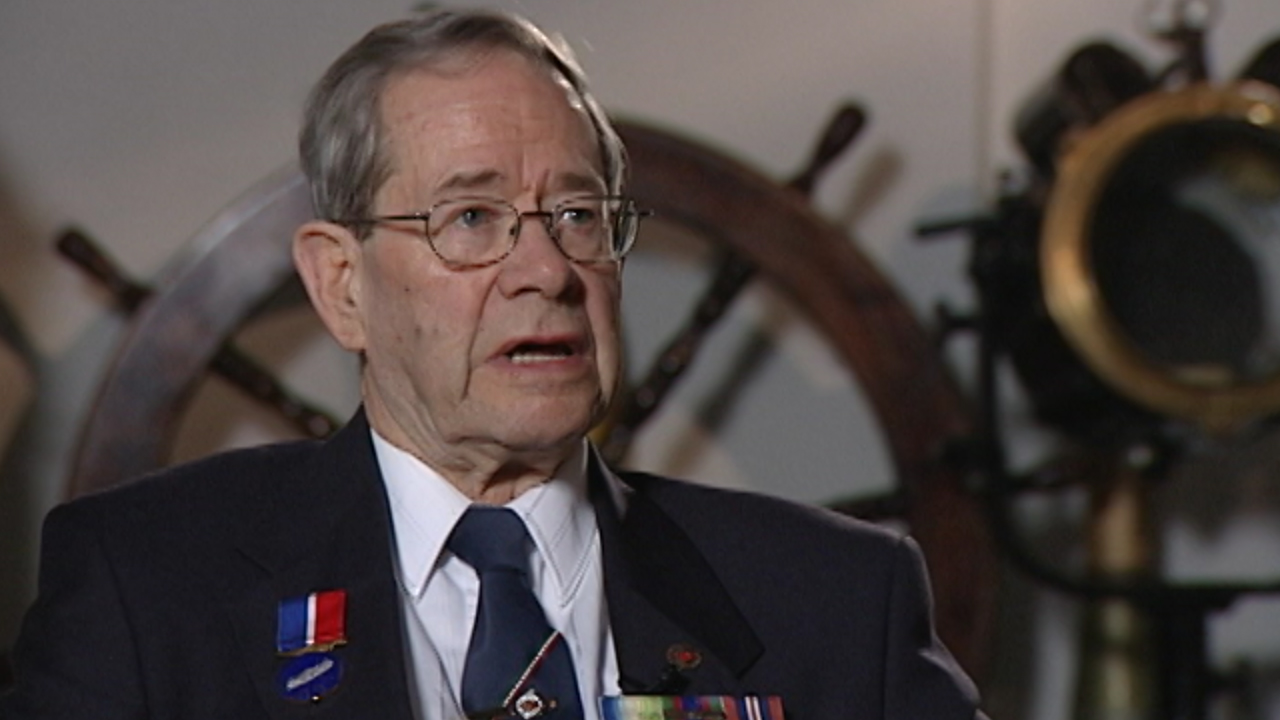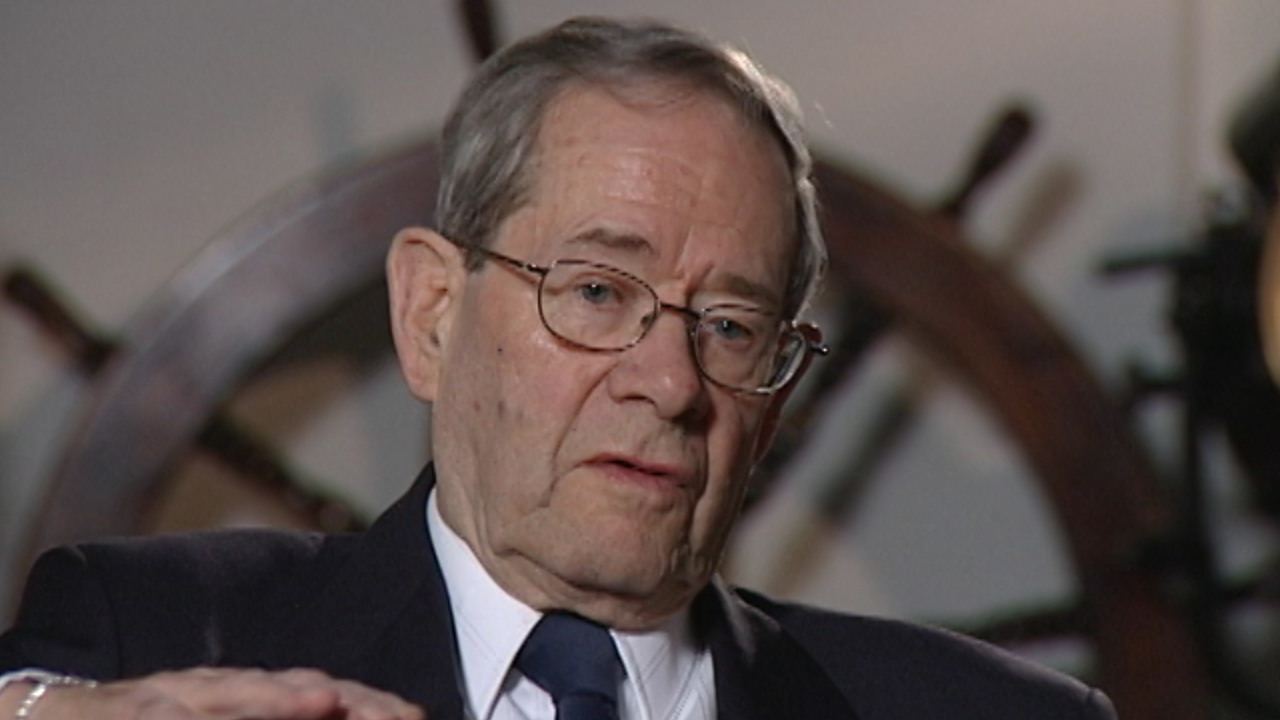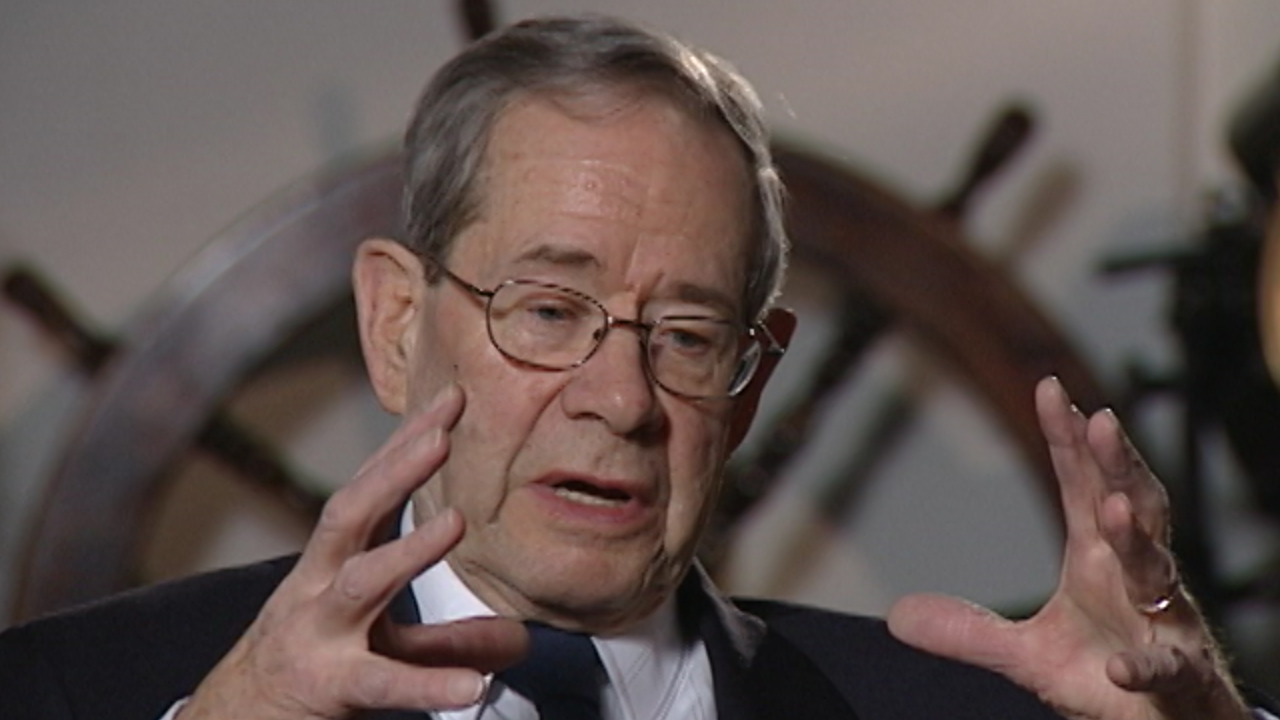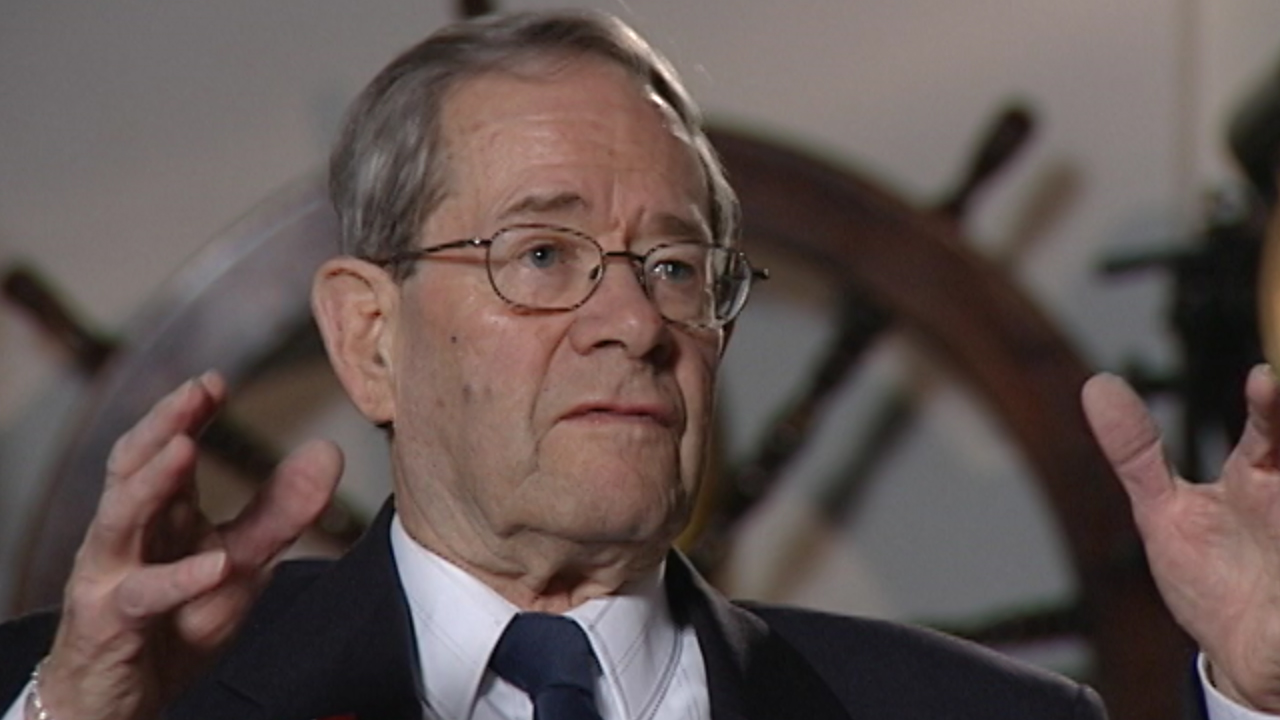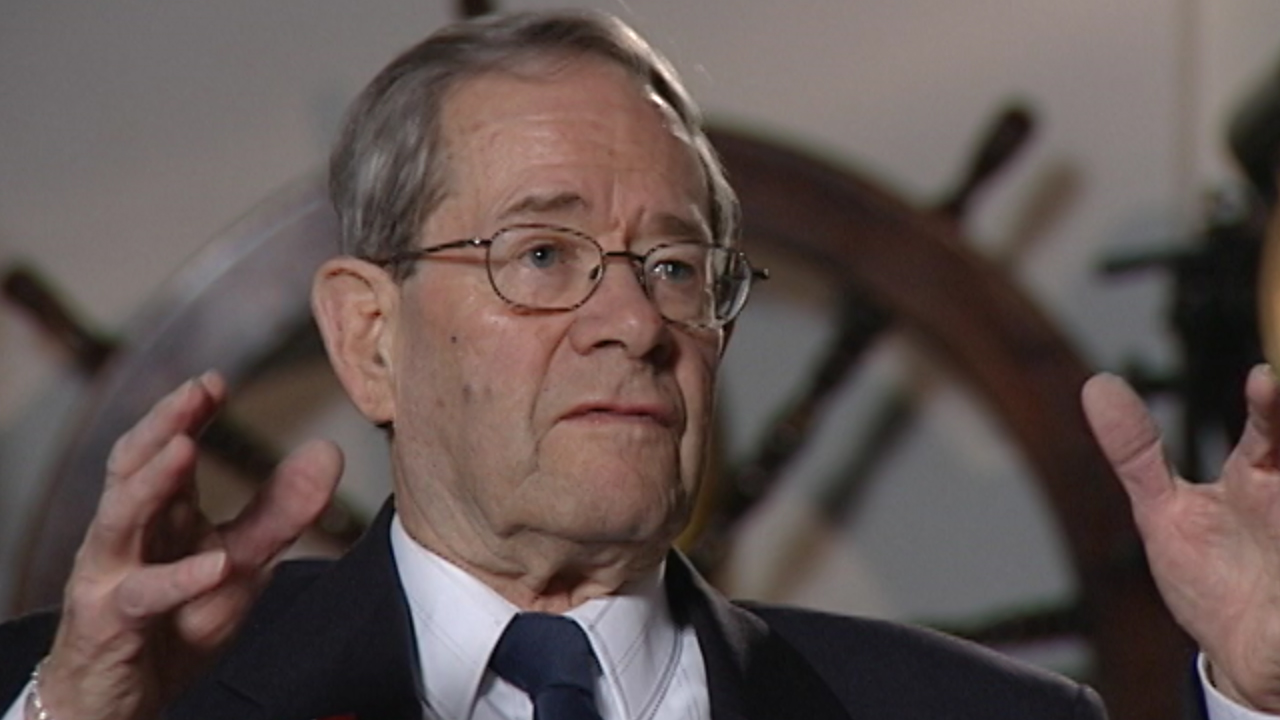First Voyage
Heroes Remember
First Voyage
Transcript
Description
Mr. Colcomb describes joining the SS Oak Island Park in Halifax harbour as part of a convoy. He describes seeing a freighter converted to a miniature aircraft carrier, a late edition to the Allies effort to thwart German U-boats.
Ross Colcomb
Ross Colcomb was born in Montreal, Quebec on July 2, 1926. After being an Air Cadet in his early teens, he enlisted in the Royal Canadian Air Force at age seventeen, and took air crew training. The demand for air crew was low near the end of the war, so Mr. Colcomb was discharged after nine months. He immediately joined the Merchant Navy. After a short period of engineering and gunnery training, Mr. Colcomb went to sea as a fireman aboard the SS Elk Island Park, which ferried war materials to England for the duration of the Second World War.
Meta Data
- Medium:
- Video
- Owner:
- Veterans Affairs Canada
- Duration:
- 2:57
- Person Interviewed:
- Ross Colcomb
- War, Conflict or Mission:
- Second World War
- Battle/Campaign:
- Battle of the Atlantic
- Branch:
- Merchant Navy
- Units/Ship:
- Royal Canadian Electrical Mechanical Engineers
- Occupation:
- Fireman
Related Videos
- Date modified:



